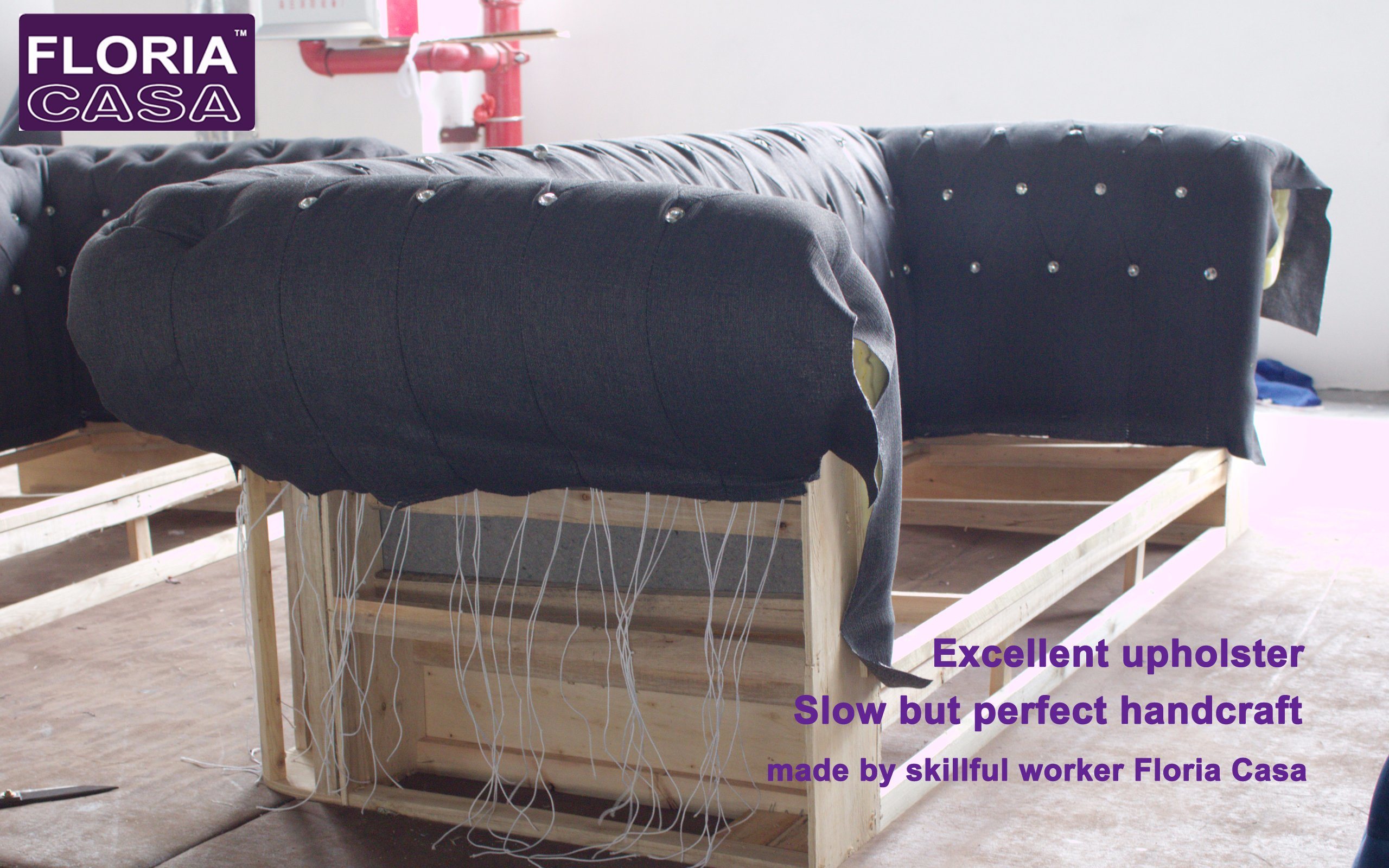Title: DIY Tips for Cleaning Up Your Fabric Sofa: A Comprehensive Guide
Cleaning a fabric sofa can be a daunting task, but it is important to maintain its appearance and extend its lifespan. Here are some DIY tips for cleaning up your fabric sofa: 1. Vacuum regularly: Use a vacuum cleaner with a soft brush attachment to remove dirt and dust from the surface of your sofa. This will help prevent stains and keep the fabric looking clean. 2. Spot test: Before applying any cleaning solution, test it on a small, inconspicuous area of the sofa to ensure it doesn't damage the fabric or leave a residue. 3. Choose the right cleaning solution: Use a mild detergent or upholstery cleaner that is specifically made for synthetic fabrics like microfiber. Avoid using harsh chemicals or abrasive cleaners that can scratch the surface of the sofa. 4. Blot, don't rub: When cleaning spills or stains, use a clean cloth or paper towel to blot the area instead of rubbing vigorously. This will prevent the stain from spreading and damaging the fabric. 5. Dry thoroughly: After cleaning, use a hair dryer or fan to dry the surface of the sofa completely. This will prevent water or liquid from seeping into the crevices of the furniture and causing mold or mildew growth.By following these simple DIY tips for cleaning up your fabric sofa, you can keep it looking beautiful and comfortable for years to come.
When it comes to maintaining the cleanliness and aesthetic appeal of your home, your furniture plays a vital role. Among the various types of furniture, fabric sofas are popular choices due to their comfortable and stylish appearance. However, like all things, fabric sofas require regular cleaning to keep them looking their best. In this article, we'll share some practical and easy-to-follow DIY tips for cleaning up your fabric sofa and keeping it in pristine condition.
Section 1: Understanding Fabric Sofas and Common Stains

Before diving into cleaning techniques, it's essential to understand your sofa's fabric and common stains that may occur. Fabric sofas can be made from various materials such as cotton, polyester, wool, or a combination of these. Each material has its unique properties and requires a different cleaning approach.
Common stains that may appear on fabric sofas include food stains, drink stains (such as coffee or red wine), pet hair, dust, and dirt. These stains not only make your sofa look unsightly but can also damage the fabric over time if left unchecked. Therefore, it's crucial to identify and address these stains promptly.
Section 2: Pre-Cleaning Preparations
Before applying any cleaning solution or detergent, it's essential to pre-clean the surface thoroughly. This step involves removing any loose dirt, debris, or dust using a soft-bristled brush or a vacuum cleaner with a soft brush attachment. Pre-cleaning helps prevent dirt from being transferred back onto the sofa while cleaning.
Once the surface is clean, blot the area gently with a clean, dry cloth to remove any excess moisture. Avoid rubbing the surface vigorously as this can stretch the fibers and cause irreparable damage.
Section 3: Cleaning Solutions and Methods
Now that you have pre-cleaned the surface, it's time to select the appropriate cleaning solution and method based on your sofa's fabric type and the stains you want to remove. Here are some general cleaning solutions and methods that work well for most fabric sofas:

a) Water and Vinegar: For mild stains caused by food or drink, mix equal parts water and white vinegar in a spray bottle. Spray the solution onto the stain and let it sit for about 10-15 minutes before wiping it away with a clean cloth. This solution is effective in removing most food stains without leaving any residue.
b) Steam Cleaning: For deeper stains or odors, consider using a steam cleaner specifically designed for fabric sofas. Steam cleaning uses hot water vapor to penetrate the fibers and loosen dirt, grime, and stains. Be sure to follow the manufacturer's instructions carefully to avoid damaging the fabric.
c) Commercial Cleaners: If you don't have access to a steam cleaner or prefer using a commercial cleaner, look for products labeled as "safe for fabrics" or "dry clean only" on the label. Test these products in an inconspicuous area first to ensure they won't damage the fabric. Follow the instructions on the label carefully when using commercial cleaners.
Section 4: Storing Your Fabric Sofa Properly
Proper storage techniques are just as important as cleaning when it comes to maintaining the longevity of your fabric sofa. To keep your sofa in good shape, make sure to store it in a cool, dry place when not in use. Avoid placing heavy items on top of the sofa, as this could compress thefabricand cause permanent damage. Additionally, rotate your sofa every few weeks to prevent uneven wear and tear.
In addition to these general tips, there are several other specific strategies for keeping your fabric sofa clean and well-maintained. These include regularly checking for stains and addressing them promptly, avoiding direct sunlight on the
Articles related to the knowledge points of this article:
Childrens Winter Coats: A Fashion Guide for Parents
Can Down Jackets Be Washed in a Machine?
Title: Mastering the Art of Tie Knots: A Comprehensive Guide to Tie Knotting Techniques
Patching a Down Jacket: A Simple and Effective Way to Restore its Warmth and Style
Title: The Perfect Pairing: How to Match a Navy Blue Suit with a Tie



